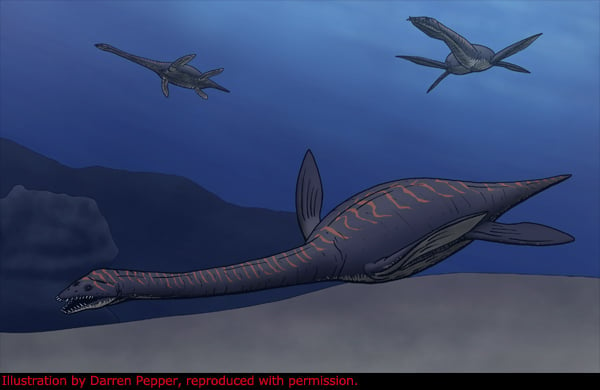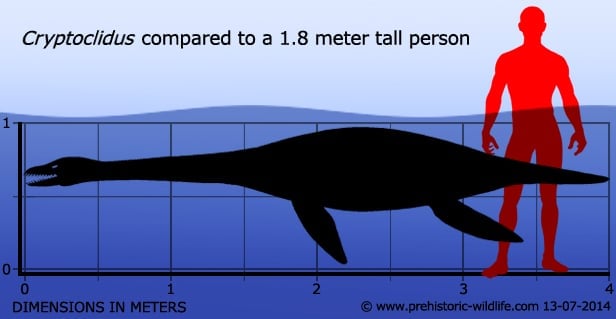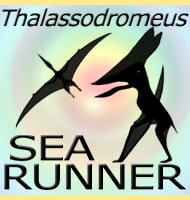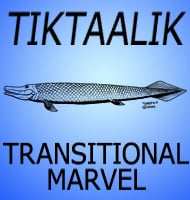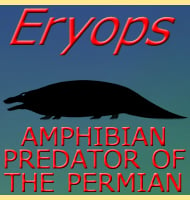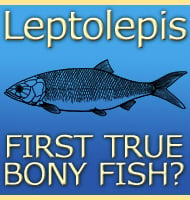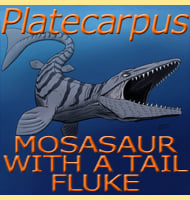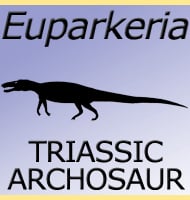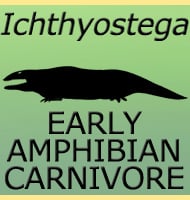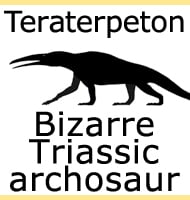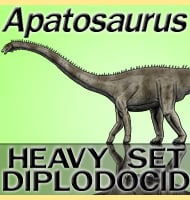In Depth
From the outset the name Cryptoclidus does not sound all that special, but when you translate it to English to mean ‘hidden collarbone’ it raises a few eyebrows. The genus name is actually in reference to the very small clavicle that is buried within the shoulder girdle that controls the front limbs, or flippers. The clavicle is more commonly known as the collar bone, and if you put your hand on your shoulder and feel a bone, that is your clavicle.
Cryptoclidus is considered to be a small-medium sized plesiosaur. The construction of the skull and teeth are very robust and seem to indicate specialisation is small soft bodied prey like fish or maybe cephalopods like squid or octopus. Study of the nasal openings has led to the suggestion that they were well adapted for detecting odours and chemical traces in the water. This ability would have allowed Cryptoclidus to quickly home in on prey species, even if they were not immediately visible. Cryptoclidus may not have been a completely marine creature with many theories and popular depictions showing Cryptoclidus to spend considerable time on the land and only really going into the water to feed. In reality it is impossible to say how Cryptoclidus divided its time between the water and land. Also, although land movement would have been possible for Cryptoclidus, it would have been a much more graceful creature while in the water.
Potential predatory threats to Cryptoclidus include pliosaurs and larger prehistoric sharks.
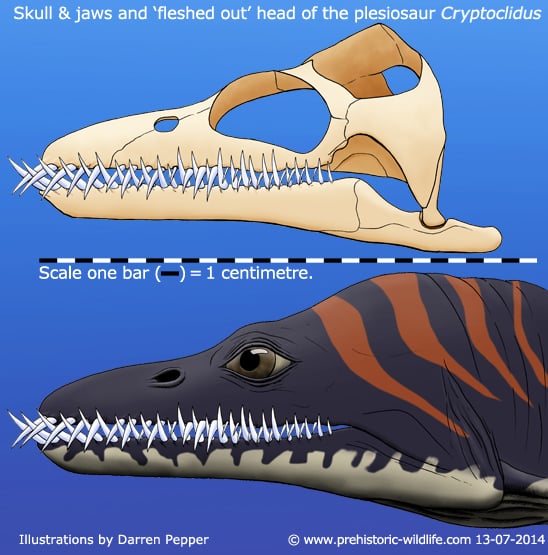
Further Reading
– The Nature of the Shoulder Girdle and Clavicular Arch in Sauropterygia. – Proceedings of the Royal Society of London 51:119-151. – H. G. Seeley – 1892. – The skull of the Callovian plesiosaur Cryptoclidus eurymerus, and the sauropterygian cheek. – Palaeontology 37.4 (1994): 941. – David S. Brown & Arthur R. I. Cruickshank – 1994. – Limb Osteology and Ossification patterns in Cryptoclidus (Reptilia: Plesiosauroidea) with a Review of Sauropterygian Limbs – Journal of Vertebrate Palaeontology 17(2); 295-307 – Michael W. Caldwell – 1997.
